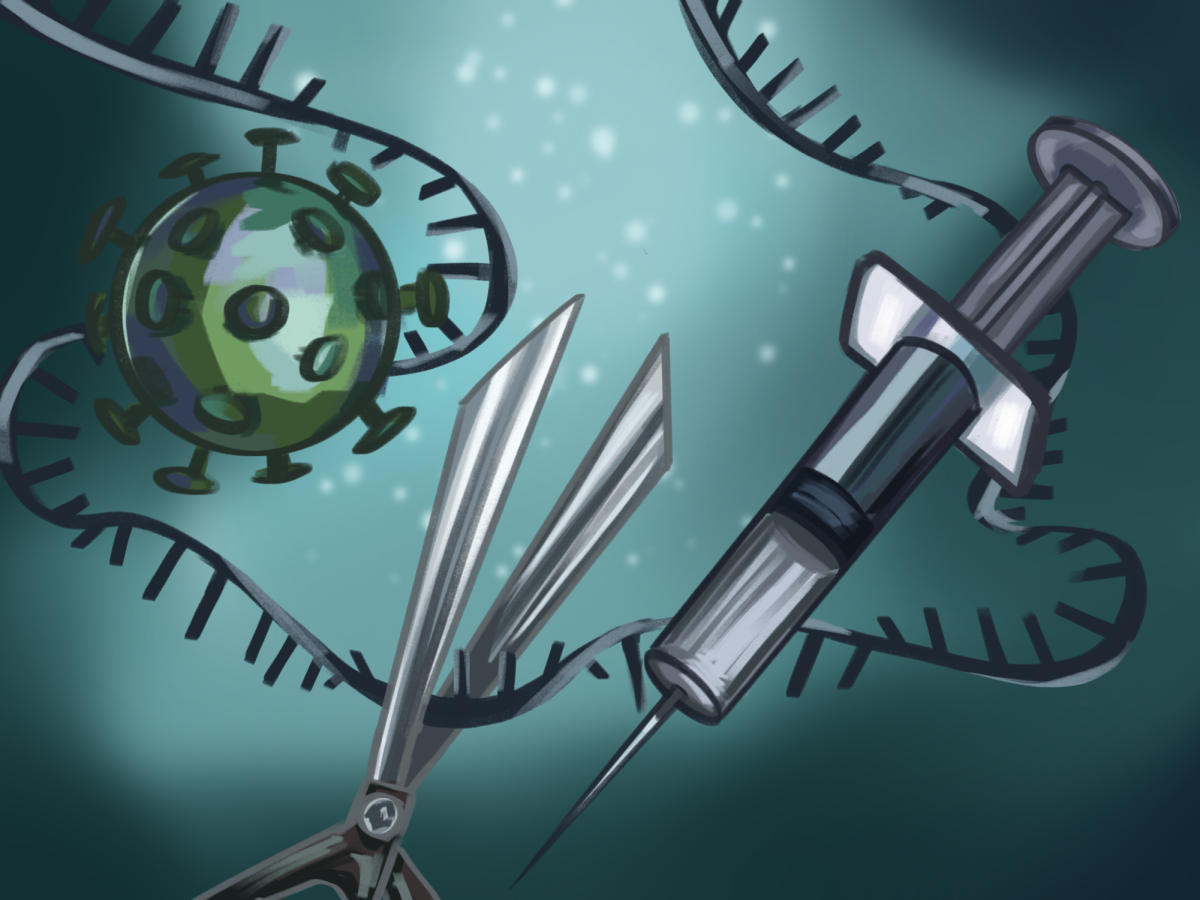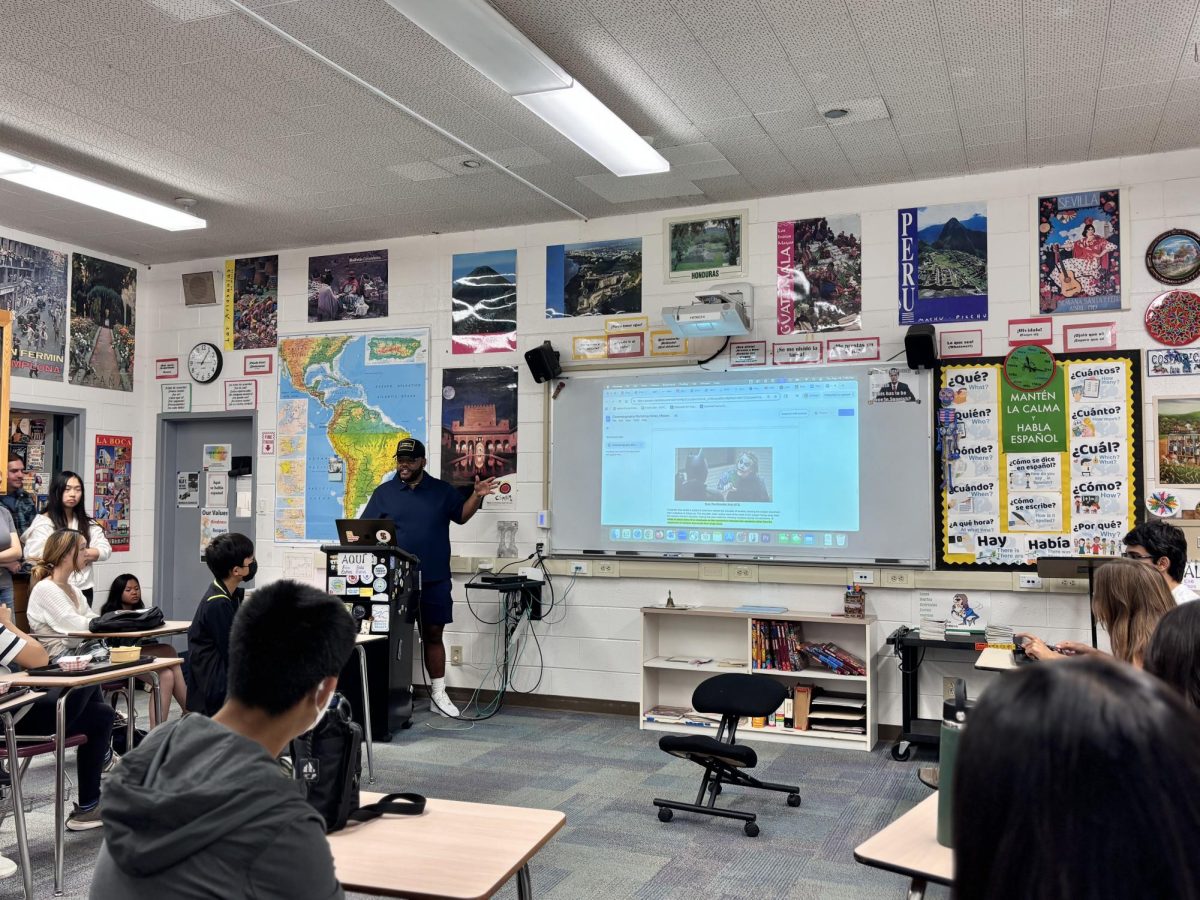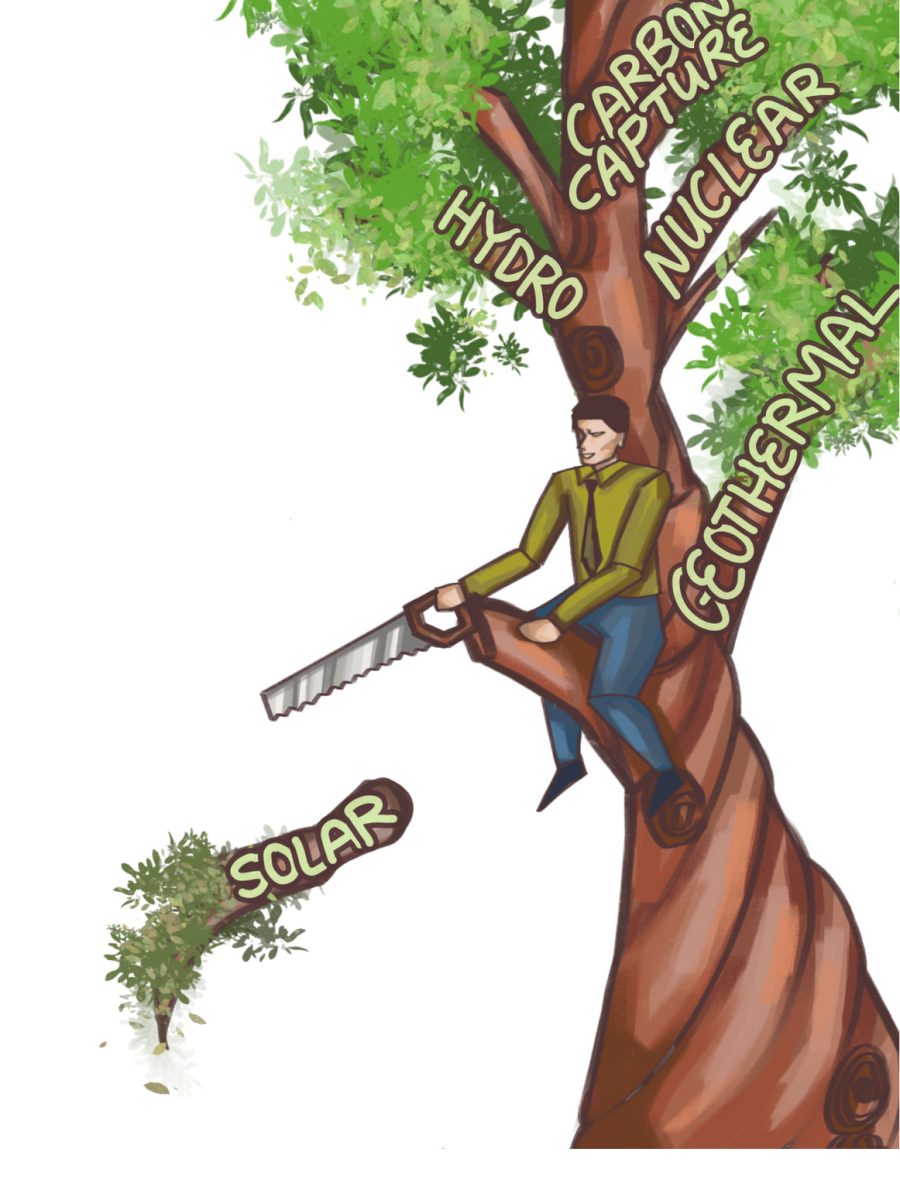AP Computer Science A and Data Structures students used Java to build the popular game Tetris on the BlueJ app and finished the project on April 11.
The lab began with students constructing “tetrads,” the game’s fundamental moving Tetris pieces that come in four blocks. Each tetrad has a different color and shape, and resembles a specific letter of the alphabet: I, T, O, L, J, S and Z.
Throughout the project, students experimented with interfaces, 2D arrays and loops. They created a grid capable of storing the tetrads by using an interface called MyBoundedGrid and setting the dimensions to twenty rows and ten columns.
“I liked the Tetris project because it let me practice a lot of complex computer science skills like 2D arrays,” AP Computer Science A student Allison Hoang (10) said. “Instead of doing practice problems on these concepts, we were able to actually integrate them into the project and see them work.”
Programmers also coded a method called “translate” that tested if the tetrads could successfully move across the grid without obstruction from other blocks. The students used the translation method to move the tetrad blocks left, right and down using the arrow keys. The up arrow and space key, in particular, served different functions: to rotate the block and to drop the block to the bottom of the grid, respectively.
To finish the final exercise, students used boolean methods, which return either true or false, to determine if a row was fully filled with blocks. If a row was complete, it would disappear, and the blocks above that row would move down one.
“The purpose of the Tetris lab is to give more experience for students with working with multiple classes,” AP Computer Science A teacher Susan King said. “You have to have awareness of objects and methods and their interplay with each other as well as the return value. The complexity in Tetris gives students an experience that’s beyond what’s part of the AP curriculum.”
Students could incorporate additional features at the end of the project, like adding background music, changing the color of the grid and increasing the speed of the falling tetrads. AP Computer Science A students were required to complete at least two additional options to earn full credit, while AP Computer Science Data Structures students needed three more features along with a “game end” and “score display” option.
“Once you get to do additional features, students get excited about making the game more of their own,” King said. “Of all the assignments I do, it is Tetris that I hear back from college students or alumni the most, that they sometimes still even play it in college and it makes them feel good … that they did something as complex as Tetris.”


















![“[Building nerf blasters] became this outlet of creativity for me that hasn't been matched by anything else. The process [of] making a build complete to your desire is such a painstakingly difficult process, but I've had to learn from [the skills needed from] soldering to proper painting. There's so many different options for everything, if you think about it, it exists. The best part is [that] if it doesn't exist, you can build it yourself," Ishaan Parate said.](https://harkeraquila.com/wp-content/uploads/2022/08/DSC_8149-900x604.jpg)




![“When I came into high school, I was ready to be a follower. But DECA was a game changer for me. It helped me overcome my fear of public speaking, and it's played such a major role in who I've become today. To be able to successfully lead a chapter of 150 students, an officer team and be one of the upperclassmen I once really admired is something I'm [really] proud of,” Anvitha Tummala ('21) said.](https://harkeraquila.com/wp-content/uploads/2021/07/Screen-Shot-2021-07-25-at-9.50.05-AM-900x594.png)







![“I think getting up in the morning and having a sense of purpose [is exciting]. I think without a certain amount of drive, life is kind of obsolete and mundane, and I think having that every single day is what makes each day unique and kind of makes life exciting,” Neymika Jain (12) said.](https://harkeraquila.com/wp-content/uploads/2017/06/Screen-Shot-2017-06-03-at-4.54.16-PM.png)








![“My slogan is ‘slow feet, don’t eat, and I’m hungry.’ You need to run fast to get where you are–you aren't going to get those championships if you aren't fast,” Angel Cervantes (12) said. “I want to do well in school on my tests and in track and win championships for my team. I live by that, [and] I can do that anywhere: in the classroom or on the field.”](https://harkeraquila.com/wp-content/uploads/2018/06/DSC5146-900x601.jpg)
![“[Volleyball has] taught me how to fall correctly, and another thing it taught is that you don’t have to be the best at something to be good at it. If you just hit the ball in a smart way, then it still scores points and you’re good at it. You could be a background player and still make a much bigger impact on the team than you would think,” Anya Gert (’20) said.](https://harkeraquila.com/wp-content/uploads/2020/06/AnnaGert_JinTuan_HoHPhotoEdited-600x900.jpeg)

![“I'm not nearly there yet, but [my confidence has] definitely been getting better since I was pretty shy and timid coming into Harker my freshman year. I know that there's a lot of people that are really confident in what they do, and I really admire them. Everyone's so driven and that has really pushed me to kind of try to find my own place in high school and be more confident,” Alyssa Huang (’20) said.](https://harkeraquila.com/wp-content/uploads/2020/06/AlyssaHuang_EmilyChen_HoHPhoto-900x749.jpeg)










